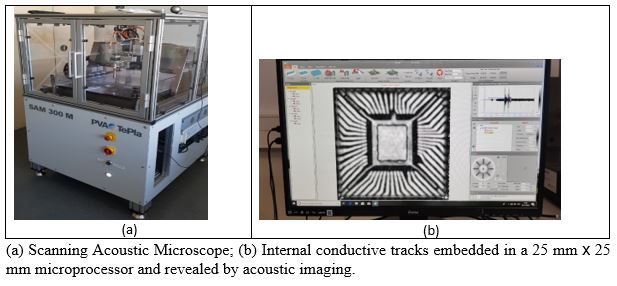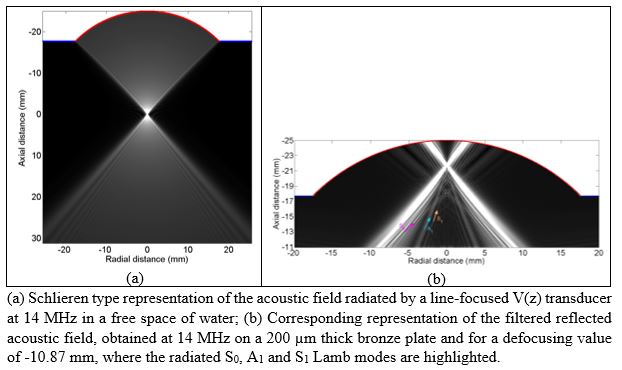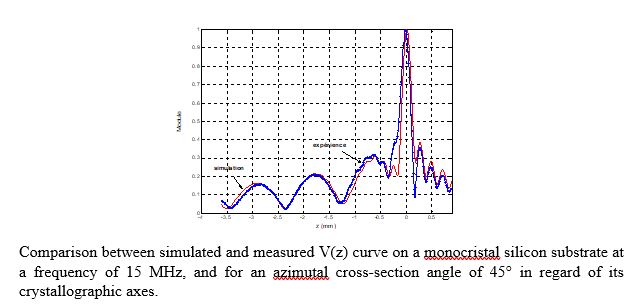Acoustic microscopy and V(z)
In the field of the design and manufacture of electronic components of semiconductor type (thyristors, triacs, etc.), one of the major issues during the manufacture of these components is to ensure a good quality of adhesion to the interface between the various materials (metal, PVDC, lithium, etc.) which are deposited in layers of a few tens to a few hundred micrometers, in particular on silicon wafers. A second challenge consists in estimating the properties of a material, in particular its mechanical properties, when it corresponds to a layer buried within a multilayer structure. Some of these properties can be estimated using non-destructive ultrasonic techniques.
On the one hand, the imaging mode of a scanning acoustic microscope brings rather qualitative information, since it allows to observe certain microstructural defects, or certain adhesion defects between layers. On the other hand, the associated “V(z)” method has become an important technique for quantitative characterization of materials. Compared to traditional methods where a delicate angular scanning is often necessary, the V(z) method does not require such a set-up. Indeed, since the V(z) method uses a focused transducer with a large angular aperture, it can be used for the generation and detection of Rayleigh waves or Lamb modes, simultaneously generated and detected at different angles. Since the V(z) method does not imply the use of mechanical angular scanning, the experimental procedure and the signal processing are greatly simplified. Another advantage of this method is that the Lamb modes are measured in a local region of the sample, which gives the possibility to detect smaller defects, especially in multilayered structures. For these reasons, the V(z) method is largely used for characterization of elastic parameters in plates or in coated materials.
Thus, the associated research consists in expending the potentialities of the V(z) method, including the improvement of interface models that best reflect the measurement results obtained, or the enhancement of the signal processing techniques associated with the V(z) data measurements.
Below are few numerical and experimental results for imaging mode and V(z) mode, respectively.



Recent associated publications:
A. Loukkal, M. Lematre, M. Bavencoffe, M. Lethiecq, “Modeling and numerical study of the influence of imperfect interface properties on the reflectance function for isotropic multilayered structures”, Ultrasonics, vol. 103, pp. 106099-106105, 2020.
A. Loukkal, M. Lematre, M. Bavencoffe, M. Lethiecq, “Modeling and numerical study of the influence of imperfect interface properties on the reflectance function for anisotropic multilayered structures”, Journal of Sound and Vibration, vol. 480, pp. 115399-115405, 2020.
M. Lematre, M. Lethiecq, “Segmented line-focused V(z) transducer for enhancement of guided mode detection and measurement: a theoretical and numerical study”, Journal of Applied Physics, vol. 129, no. 2, pp. 1-13, 2021.
